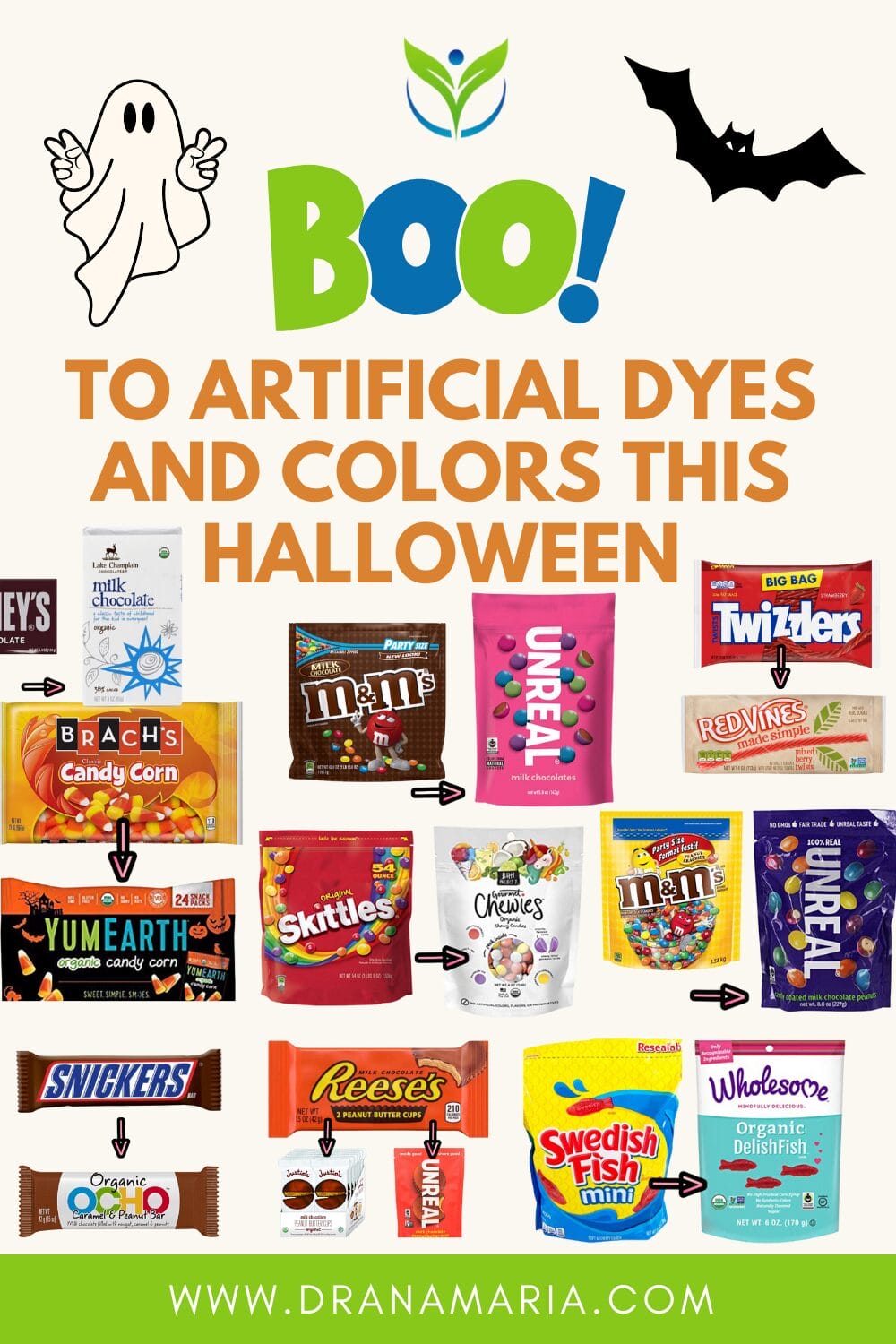The first time I knew artificial dyes and preservatives could affect children’s behavior and health was in 2010 when 11-year-old Adam, who had ADHD, came to see me. His mother told me that when Adam ate food or candy with blue dye, he would flap his hands repeatedly, and when he ingested caramel coloring, he would sniff his fingers.
I had never heard of anything like this. I listened intently and then looked to see if there was any research on this phenomenon.
What was happening to Adam? Caramel coloring comes from food sources such as wheat, barley, or milk, and milk is the most common source. Each of these individual foods are common allergens, so Adam could have had a sensitivity to one of these ingredients and not the caramel coloring itself.
However, Adam’s mother was quite certain there was a direct correlation. She tested her hypothesis by giving him those colorings on several occasions and watching his physical movements change. Adam was an engaging and talkative young man, and he understood how these ingredients affected him. He did not like the feeling of being out of control of his body after accidentally ingesting these ingredients and was more than willing to avoid these artificial compounds.
What Does the Research Say?
After meeting Adam and beginning my fellowship in integrative medicine, I studied the nuances of using supplements to support a child’s biochemistry and physiology, and I paid more attention to the ingredients of the various supplements I used and recommended. In this process, I even discovered that the infant vitamin I had been recommending had a caramel color in it. Wait, what?!
In April of this year, KQED reported the conclusion of scientists at the California Office of Environmental Health Hazard Assessment, that levels of the artificial food coloring determined to be safe by the Food and Drug Administration are too high for children.
In the same KQED story a senior scientist for the Center for Science in the Public Interest, Lisa Lefferts, said, “We’ve been contacted by over 2,000 families reporting their experiences with food dyes.”
“Sometimes children are violent. They have meltdowns. They may even apologize for their behavior and say they can’t help it.”
Joel Nigg, a psychologist and ADHD researcher at Oregon Health & Science University, along with his colleagues, estimate that 5%-10% of kids with ADHD may be sensitive to synthetic food coloring. Nigg’s research indicates that a small percentage of children without neurological disorders may also be highly sensitive to chemical food dyes.
The United Kingdom has required a warning label on foods with artificial dyes since 2010 that discloses how they can affect children’s behavior: “Consumption may have an adverse effect on activity and attention in children.” While international manufacturers voluntarily removed artificial colors and other objectionable ingredients in the UK, they did not simultaneously implement these changes in the United States. Yes, there are gradual changes here, but we have a long way to go.
Found in Meds and Supplements
Many over-the-counter (OTC) and prescription medications have artificial colors. Especially the medications marketed for children. The brighter the color, the more appealing it is, right? Amoxicillin is not naturally pink!
When a patient is taking different medications, colors can help to differentiate one from another, promoting safety as well as brand identity. But as we discuss here, added colors are not without a downside. Artificial dyes can overload an already compromised system. Most kids can handle artificial dyes for a short course of medication, but it would be ideal if we could move toward more natural colors to help differentiate medications.
Medications that are in chewable or liquid form often have more dyes and sweeteners than tablets or capsules to make them more palatable for kids. Recently, one of my patients needed an antibiotic and since he could swallow pills, I thought we would be in the clear with the tablet form. After spending 20 minutes on the phone with the pharmacist, I could not find any form of this antibiotic (tablet, capsule, or liquid) from the regular pharmacy that didn’t contain artificial dyes. I had to call a compounding pharmacy to get a special batch made up for this little guy. It’s wonderful that we have the option to get medications compounded, but insurance rarely covers the cost.
Supplements are another area where dyes can lurk. One of the popular fiber supplements for kids contains:
wheat dextrin, sorbitol, corn starch, microcrystalline cellulose, dextrose, citric acid, natural and artificial flavor (soy), magnesium stearate, silicon dioxide, sucralose, aspartame, acesulfame potassium, red 40 lake, yellow 6 lake, blue 1 lake
All vitamins, supplements, and medications must be manufactured, shipped, and stored before we ingest them, so most of them are going to contain an ingredient or two that are not ideal. We just want to do the best we can to choose medications and supplements that have ingredients to support our natural physiology while they do their job.
Genexa is one company responding to the need for cleaner products. They make several of the common children’s OTC medications, such as ibuprofen, acetaminophen, and diphenhydramine, without artificial dyes.
Labeled Ingredients to Avoid
As we head into Halloween and the holiday season, remember to read labels. Eat as much real food as possible and fill your children up with whole foods before they go out trick-or-treating!
Avoid foods, candies, medicines, and supplements with the following dyes and colors:
- FD & C Blue #1
- FD & C Red #40
- FD & C Yellow #6.
The FDA has cleared these dyes for ingestion, but since so many of my patients have reacted to them, why not choose products that do not contain them? Why add more synthetic ingredients for the gut and liver to process?
When in doubt, follow European Union (EU) Guidelines for food additives because the EU uses a more conservative approach to regulating them. You cannot purchase foods with dyes Red #40, Yellow #5, and #6 in the European Union, so I recommend avoiding them too.
Here is a concise table by Jill Castle, a pediatric dietitian and mom of four, listing artificial ingredients that can be found in different foods. Her site provides a wealth of other information.
Halloween Candy Blues
One way to help your kids enjoy Halloween while keeping them healthy is to find candy swaps. Versions of your child’s favorite candy that do not contain artificial dyes. I recommend reading Dr. Temple’s excellent blog post about the horrors of Halloween candies and how to make better choices. After you do, you’ll know how to replace “this” with “that.”

Home-baked goodies for comfort food
Here are two recipes for tasty treats from my book, Healthy Kids, Happy Moms: 7 Steps to Heal and Prevent Common Childhood illnesses. Your entire family will enjoy them all year around (and you’ll enjoy the ease with which they’re made).


Taking small, gradual steps is the best way to make change. I encourage you to plan your week of food with the same gusto that you would plan a trip to Disney World. Look at the week ahead. Identify what events you have happening and where you have tight turnaround times. Be sure to have healthy snacks and bottles of filtered water in reusable containers so you don’t have to pull into the fast-food drive-thru!
You can do this and it will make a difference for your entire family!
Found this post helpful? Save it for later!

References
https://www.fda.gov/industry/color-additives/color-additives-history
https://www.ncbi.nlm.nih.gov/pmc/articles/PMC3441937/
https://pubmed.ncbi.nlm.nih.gov/15613992/
BIO:
Sheila Kilbane MD is a board-certified integrative pediatrician practicing in Charlotte, North Carolina. Her bestselling book, Healthy Kids Happy Moms: 7 Steps to Heal and Prevent Common Childhood Illnesses focuses on common and recurring illnesses including reflux, eczema, recurrent ear and sinus infections, asthma, allergies, and GI issues such as abdominal pain, constipation, and loose stools.






